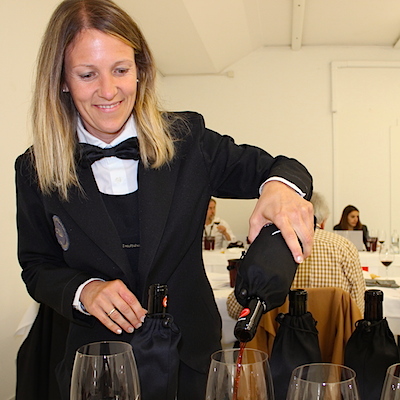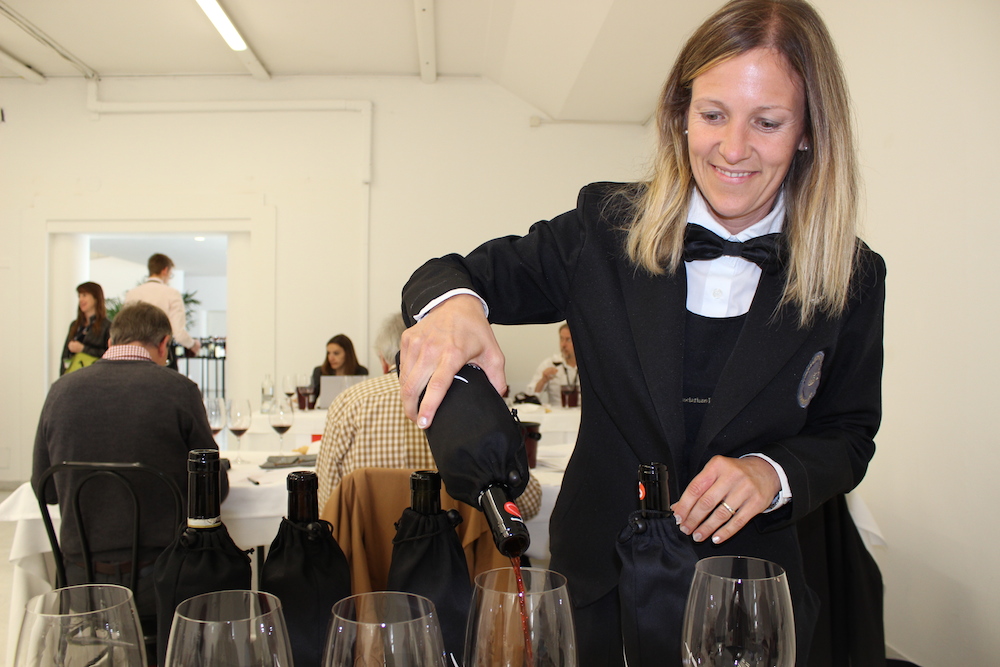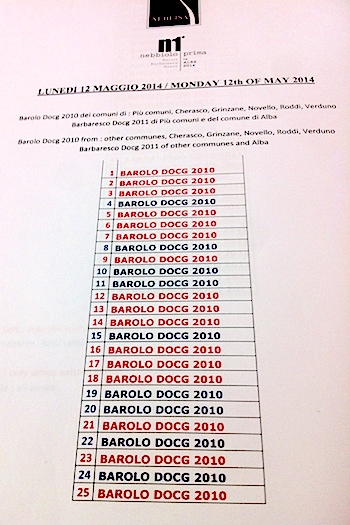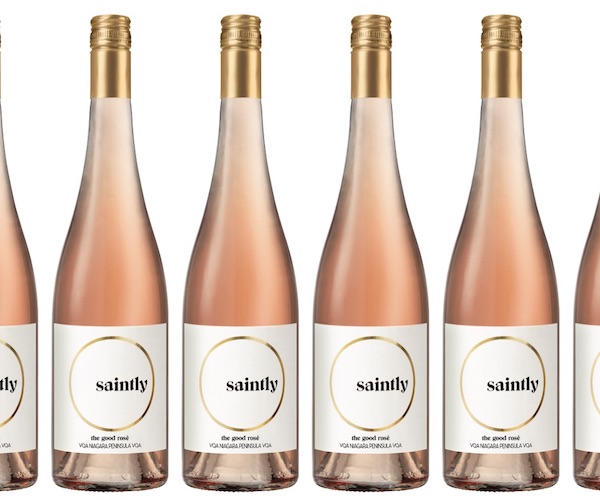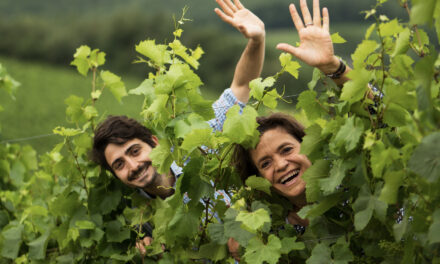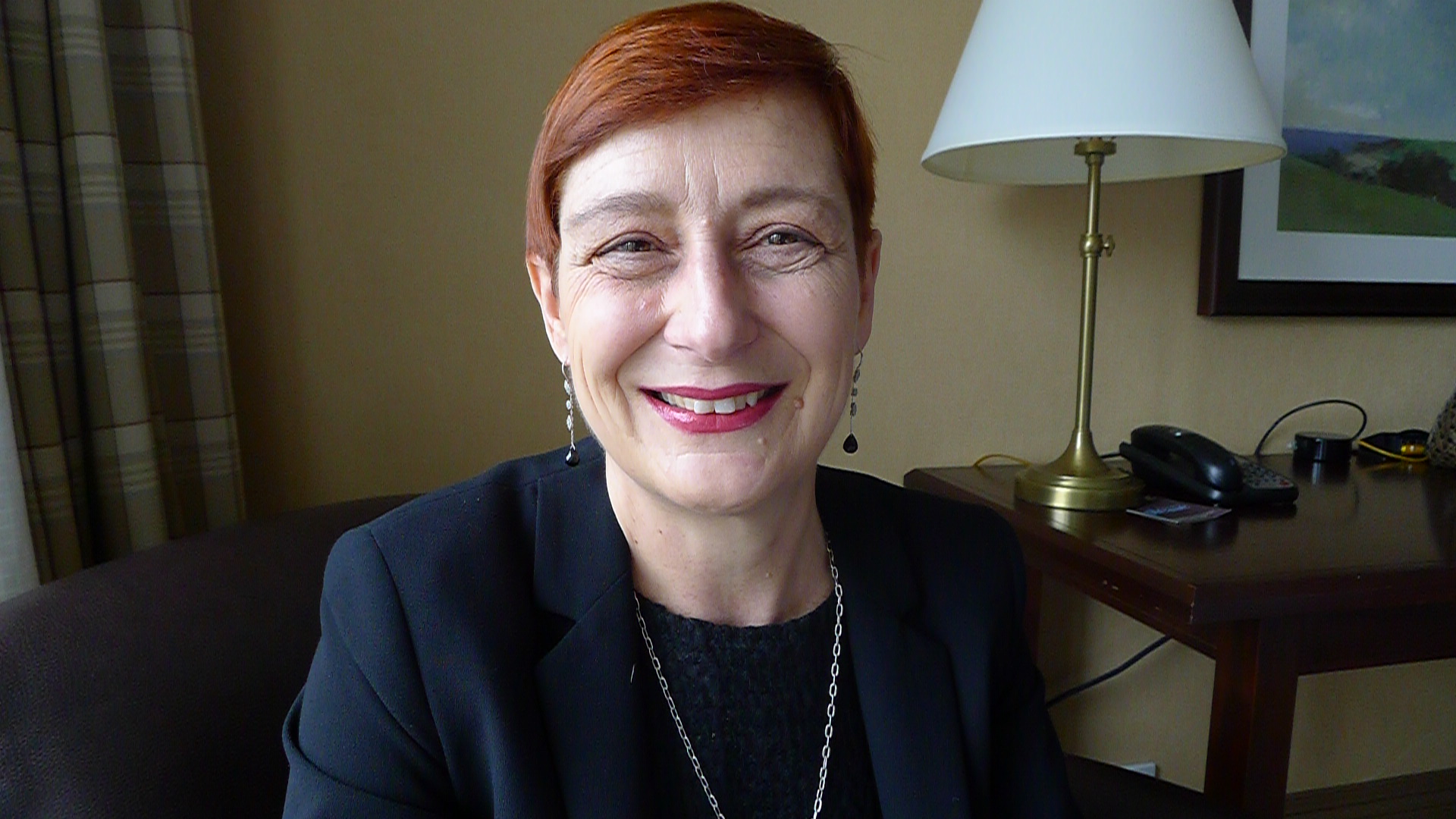It’s Monday morning, and after a light breakfast of juice, coffee and some bread and butter, I sit down to get to work. Work it turns out, is a little different from my usual routine at the beginning of the week, as before me are five large wine glasses, a sheet of paper with a list of a 100 or so wines available to taste – there is also, mercifully, a large bucket into which to spit.
This May, I travelled to the small city of Alba, in the Piedmont region of Northwestern Italy, as a guest of Albeisa, the trade name of the The Unione Produttori Vini Albesi, the consortium that represents the winemakers of that region. The most famous wines made in the hills around Alba are Barolo and Barbaresco. Both are made with the Nebbiolo grape, and the occasion of my visit was primarily to attend Nebbiolo Prima, the conference by which the bulk of the 2010 vintage of Barolos and the 2011 vintage of Barbarescos were respectively released, as well as the 2008 Barolo Riservas, the 2009 Barbaresco Riservas, and from the smaller region of Roero the 2011 vintage and 2010 Riserva vintage. The routine of the conference, which ran from Monday, May 12 through to the Friday, was to taste (50 to 100) wines blind in the morning, then visit wineries and winemakers in the afternoons. (Look for my reports on particular Barolo and Barbaresco producers in upcoming GFR posts.)
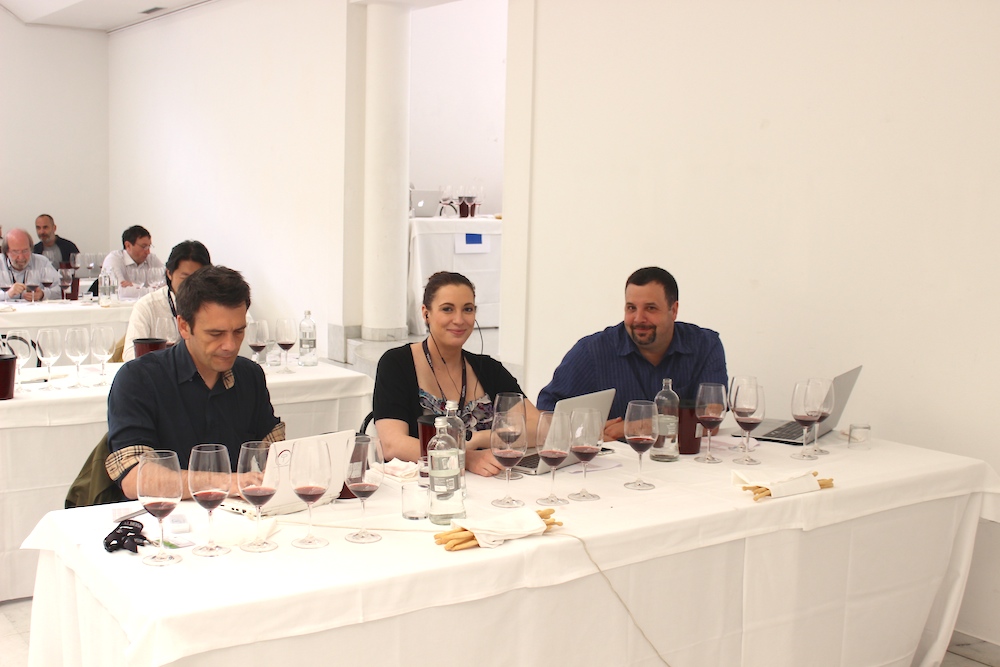
Canadian wine writers Amanda Allison (centre) and Evan Saviolidis (right) working through their morning tasting at Nebbiolo Prima.
The mornings spent at Nebbiolo Prima were pretty intense. We sat in a pretty old art deco building whose windows were high, and whose white floors, walls and ceilings offered no distraction from what was in each glass. My wine writing has always been more about the people who make wine and wine in the context of the culture of where it’s grown and made (in other words, how it works at the table), but this exercise in concentration was fascinating and offered a sort of instant yet deep background knowledge for the interviews that followed. I’m glad I did it.
The hardcore technical writers who congregated for the tasting took detailed notes into their laptops, no doubt rating each wine so the information could be retrieved for the benefit of their audiences of collectors and professionals. They were tasting upwards (if not more some days) of 100 wines per morning. I opted for the “soft” program, which meant tasting about half that number, which gave me a little extra time to explore gastronomic possibilities of Alba (again, watch for a GFR post on that shortly, too). Still, 50 odd wines to be examined, swirled, moved around the mouth, then spat out two or three times each at minimum, made for a good two hour session, even my notes were brief and in short hand.
The labels of each wine were obscured by a black sack over the body and neck of the bottle, and one followed one’s tasting progress from sheets which simply named the appellation and vintage of the wine. In the afternoons, the consortium emailed the attendees a key to what wines they had tasted. While there were outliers (both good and bad) in all the tastings, the best insight I was able to garner from the exercise was a general impression from the wines that shared characteristics, that would be said to make up a sort of median flavour profile. To wit, the 2010 Barolos are firm and full of great acid and big fruit, while the 2011 Barbarescos show more extraction, as one would expect from a hot year. Nebbiolo is a famously thick skinned grape, and was tradionally made to be aged for ten or more years. At three or four years the tannins in the wines I tasted were gripping, to say the least. What’s interesting is that despite the astringency, they nearly all displayed the balancing characteristics pronounced acidity and bright fruit… even if my teeth sometimes hurt by the second or third flight.
If you crave more detail about the releases, then Albeisa has put together a series of YouTube videos with opinions on all the tastings from journalists across the world shot on site – click here.
 Malcolm Jolley is a founding editor of Good Food Revolution and Executive Director of Good Food Media, the company that publishes it.
Malcolm Jolley is a founding editor of Good Food Revolution and Executive Director of Good Food Media, the company that publishes it.

